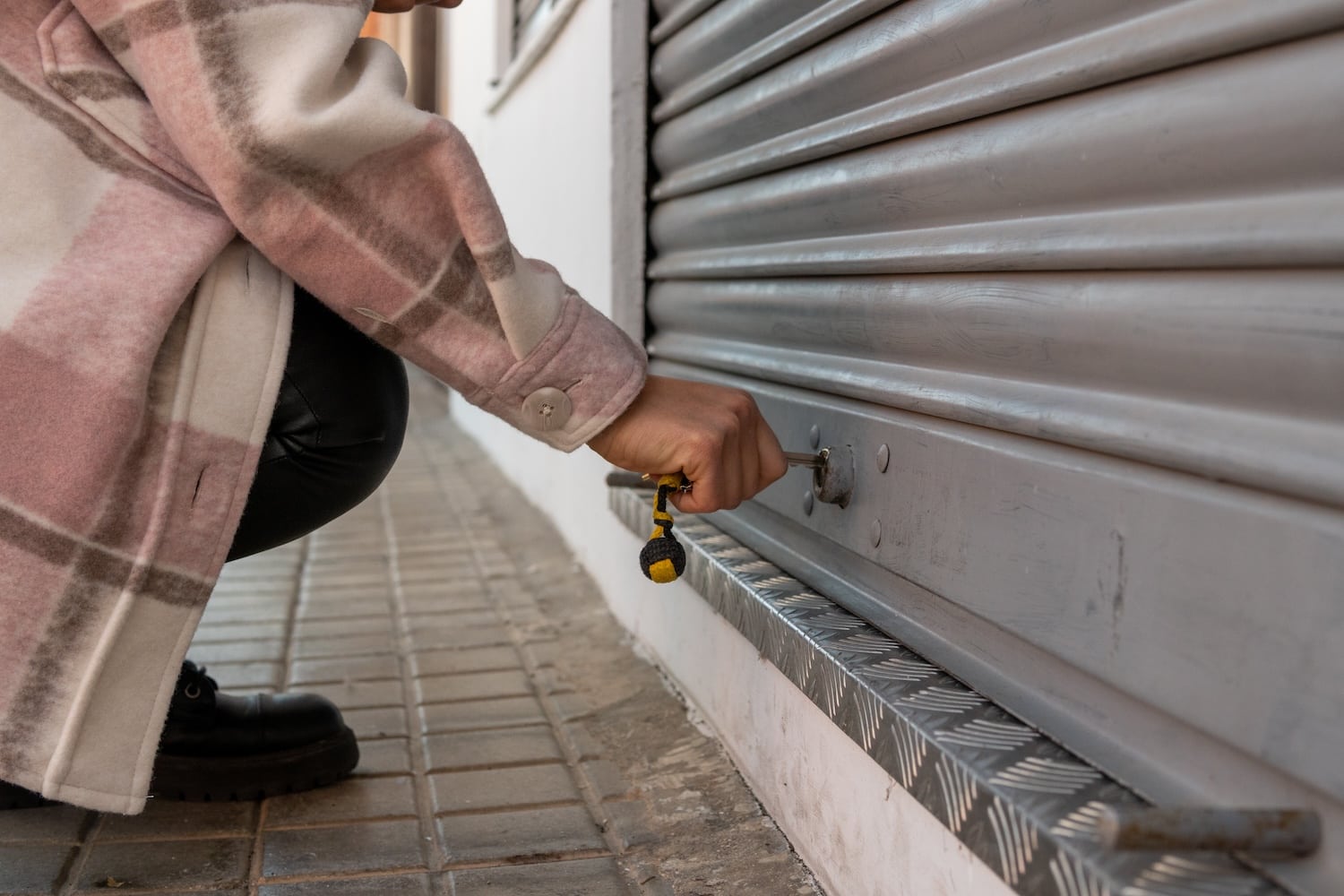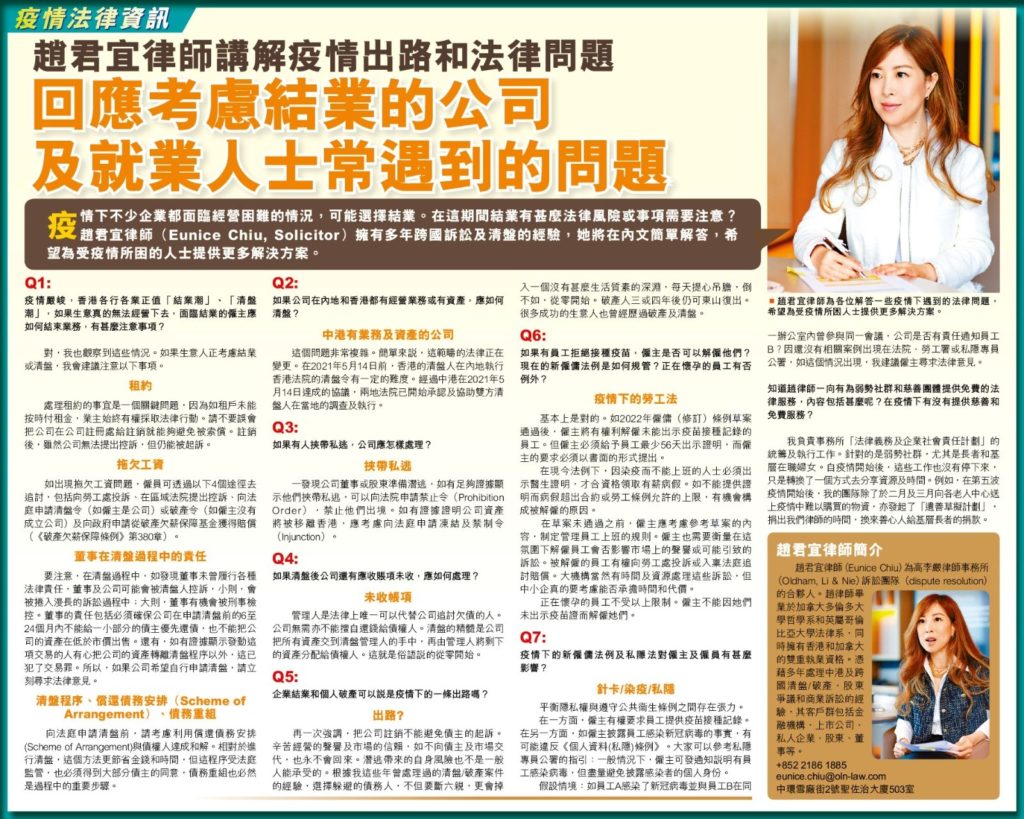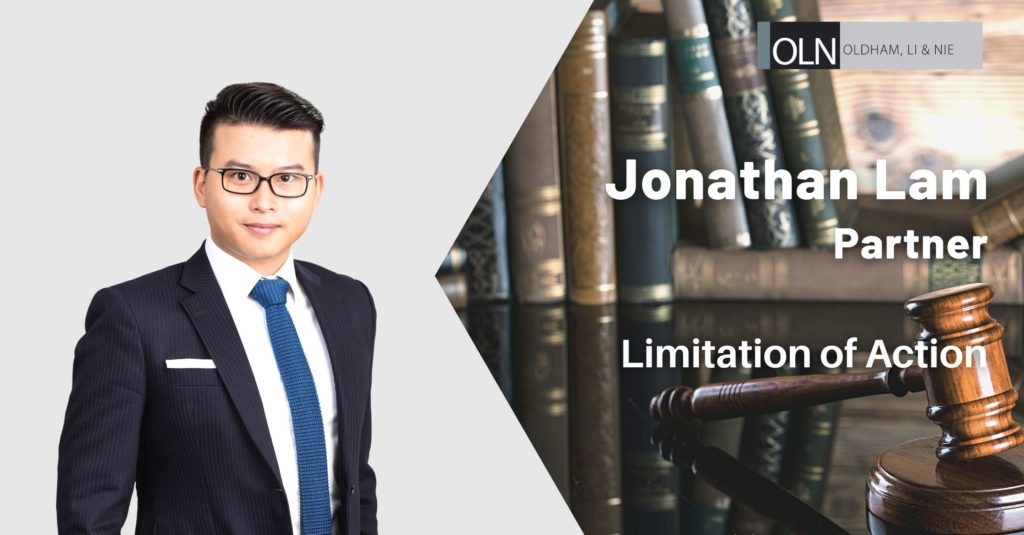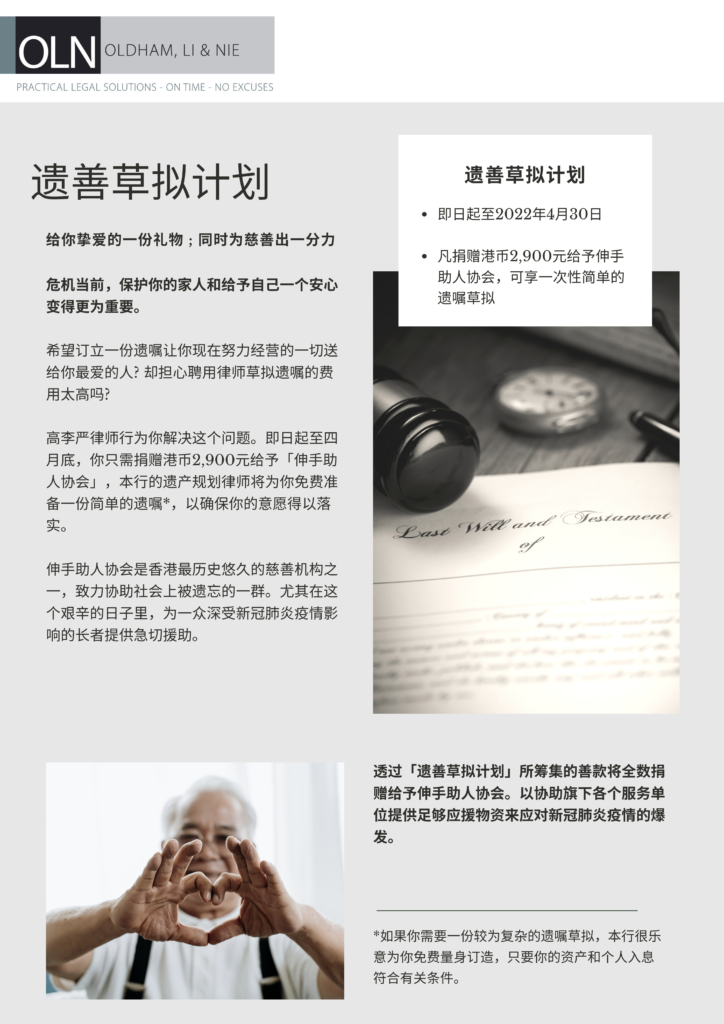The 5th wave of COVID in Hong Kong has hit the business community hard. Many businesses have closed down whilst some companies and sole proprietors are considering winding up and bankruptcy as options to limit losses. For businesses that continue running, they face new challenges in dealing with employees as a result of various legislative measures taken by the government on vaccination and related requirements.
Here is a practical and brief look at:
- issues that businesses and individuals should be aware of when considering winding up and bankruptcy or when faced with a winding up or bankruptcy petition issued by creditors; and
- what employers and employees need to know in the face of new health-related legislative measures and implications on privacy protection.
1. DEREGISTRATION OF A COMPANY
Many companies in financial trouble attempt to avoid creditors by de-registering. Unfortunately, de-registration cannot achieve the desired effect because the company can still be sued whilst directors and shareholders continue to bear liability for the period that the company remained operational. On the other hand, having been de-registered, the company has no right to sue others or defend itself when sued by others, which is a major disadvantage, to put it lightly.
2. WINDING UP
The Process in a Nutshell
Winding up of a company by the court can be initiated by the company itself, the company’s shareholders or its creditors. In each case, the process is commenced by the filing of a petition in court which essentially claims that the company is unable to pay its debts. Prior to this step, the creditor must have served a statutory demand on the debtor and provided 21 days to the company to repay the debt.
Where winding up was instigated by creditors, a creditors’ meeting will be held to appoint a liquidator. Voting is by simple majority.
Where shareholders wish to wind up the company, an EGM must be called to pass a resolution to wind up the company. Such a resolution requires at least 75% of the shareholders present voting in favour of it. Generally, at the same EGM, the members will also pass another resolution to appoint a liquidator.
Once the liquidator is appointed, he/she will “realize” all assets of the company, i.e. investigate and gather assets, turn them into cash and distribute them amongst legitimate creditors on a pro rata basis based on priorities dictated by the law. Secured creditors and employees enjoy priority.
A provisional liquidator may also be appointed to protect the company’s assets at any time after the presentation of the petition and before the making of a winding up order. The appointment of a provisional liquidator or a liquidator triggers an automatic suspension of all legal actions against the company except with the court’s special permission.
Defences and Injunctions
A strong defence to being wound up is the lack of a genuine debt but instead just a mere claim that has yet to be proven, i.e. there is a genuine dispute as to the existence of the debt.
Often, those seeking payment from the company will indiscriminately issue a winding up petition as a way to apply pressure on the company to pay up. If such is done in the absence of a genuine debt, alleged debtors should consider obtaining an injunction on the basis that the petition amounts to an abuse of the process of the court.
Settlement/Voluntary Arrangement with Creditors
As the winding up process can be costly and lengthy (don’t forget that the costs of the process and liquidators’ and legal fees will be paid out of company assets before distribution to creditors), debtors should always consider if there is a way to work out a settlement with creditors and vice-versa.
Scheme of Arrangement
Another alternative to winding up is to put into place a Scheme of Arrangement, a court-approved arrangement between the debtor and creditors that binds all creditors including those who are against the arrangement as long as the votes of more than 50% of creditors holding 75% of the company’s debt are obtained. The Scheme must then be submitted to the court for approval. The court scrutinizes compliance with legislatively-mandated procedures and the fairness of the proposed arrangement between the company and its creditors (or amongst different classes of creditors). Since a Scheme does not automatically suspend proceedings against the debtor company, the parties should consider applying for a provisional winding up order which does trigger an automatic suspension on such legal actions.
Liabilities of Shareholders and Directors of a Company in Liquidation
In a winding up, shareholders and directors can become embroiled in separate litigation (civil, criminal and/or regulatory), if they are found to have engaged in certain prohibitive transactions, such as:
(a) Unfair preference – In simple terms, this involves the company giving a preference to certain creditors in the 6-month period leading up to the presentation of the winding up petition (2 years if the recipient is a person/an entity connected to the company).
(b) Transaction at an undervalue/for no value – In basic terms, this involves the company transferring its assets at a value that is below market value or for no value at all, effectively putting the assets outside of the asset pool. Depending on the circumstances, the period under review can be up to 5 years before the presentation of the petition.
(c) Fraudulent transfer – In simple terms, this is a transaction at an undervalue or for no value but made with the intention of defrauding creditors.
Determining in which jurisdiction to apply for winding up
If the debtor company in issue is a non-Hong Kong registered company, the Hong Kong courts will only grant a winding up order if:
(a) There is a sufficient connection between the company and Hong Kong. That HK is the place of incorporation does not necessarily mean there is a sufficient connection; it is but one of the factors taken into consideration.
- In a winding up where shareholders seek to wind up the company on just and equitable grounds rather than mere insolvency, factors that are usually required to be present include the company having carried on business in HK and the events giving rise to the dispute concerned occurred in HK.
- Fraud that took place in HK will almost always provide the sufficient connection for the HK courts to take jurisdiction.
- Location of income stream.
- Did administrative decisions and relevant events happen in HK?
- Where do the shareholders and directors of the company reside?
- Where are the assets and businesses of the company located?
- Whether the company has an established place of business in HK, e.g. where are the books and records kept, where is the Register of Members kept?
(b) There is a reasonable possibility that the order will benefit those applying for it. Another way of putting it is, there is a person in HK with sufficient economic interest in the liquidation of the company to justify a winding up in HK. An example of a situation where this requirement will not be met: the company’s only asset in HK is its listing status, provisional liquidators have already been appointed in the company’s place of incorporation (usually an offshore jurisdiction such as the BVI), liquidators appointed by a HK court have no legal standing or power to take control of the company’s subsidiaries in the PRC. The law on the ability of HK-appointed liquidators to take control of assets located in the PRC is changing, as discussed below.
(c) The court must be able to exercise jurisdiction over one or persons in the distribution of the company’s assets.
Applying for a winding up order outside of HK and getting it recognized by the HK courts?
As a starting point, HK courts will consider the place of incorporation to be the correct jurisdiction to issue a winding up order and have it executed. However, even if HK does not have the strongest connection with the company (i.e. the company’s center of main interest (“COMI”) is not in HK – see the above list under (a) sufficient connection), the following factors:
- Is the company a holding company and if so, does the structure require the place of incorporation to be the primary jurisdiction to effectively liquidate or restructure the group?
- The extent to which giving primacy to the place of incorporation is artificial, having regard to the strength of the company’s connection with its location.
- The view of creditors and whether they are sceptical of restructuring plans.
- Is there sufficient information about the restructuring exercise?
Hong Kong – Mainland Mutual Recognition of Winding-Up Order
Prior to 14 May 2021, it was difficult for HK-appointed liquidators to enforce the winding up order in the PRC. On that day, a mutual recognition arrangement was put into place allowing for courts in Shanghai, Shenzhen and Xiamen to give effect to a HK winding up order and vice versa, provided that certain requirements are met. In a nutshell, they are:
(a) The company has a substantive place of business, a representative office or has its main assets in one of the 3 cities.
(b) The company’s COMI has been in HK for a period of 6 months.
Since then, the Shenzhen court has recognized a HK winding up order in Re Samson Paper Co Ltd, HCMP 963/2021. In this case, the company in question was incorporated in HK, had a 40-year presence in HK, with assets in the PRC, including a wholly-owned subsidiary in Shenzhen, receivables from affiliates incorporated in the Mainland and an apartment in Beijing.
It is important to note that the creditors in this case were all in agreement as to the specific duties that ought to be granted to the liquidator (taking over the company’s most important assets, making decisions in relation to the company’s internal management affairs, deciding on the company’s daily and other necessary expenses, managing and disposing of the assets).
Under HK law, the views of the creditors are germane to the recognition of a foreign winding up order and generally in winding up proceedings. It remains to be seen if the PRC courts will give recognition to a HK winding up order if creditors take different views on the liquidator’s powers and duties. The 2 pending applications in the PRC courts will hopefully provide further clarity to such issues.
3. PRACTICAL CONSIDERATIONS IN WINDING UP/BUSINESS CLOSURE
Leases and the Intended Legislation to allow tenants to defer rental payments
One issue that companies often face during a winding up or business closure is dealing with leases of office premises, warehouses, factories, etc. If rent is unpaid, the landlord can sue in the courts or the Lands Tribunal or even present a winding up petition.
On 23 February 2022, our Financial Secretary announced that new rent relief law will soon be enacted to allow certain classes of commercial tenants to defer paying rent for 3 months or longer. Until then, without a break clause (i.e. a clause that allows a tenant to terminate the lease after a certain period of time or under specified circumstances), tenants can do little except to attempt negotiation of a settlement with the landlord or even renegotiate the lease. Many landlords would rather renegotiate than kick the tenant out resulting in zero income.
Unpaid Wages
Employees can recover their salaries in the following ways: filing a complaint with the Labour Department, initiating legal action in court, applying to court to wind up the company or to bankrupt an individual employer, and applying to the government for compensation from the Protection of Wages on Insolvency Fund (Protection of Wages on Insolvency Ordinance (Cap. 380)).
Commencing legal action against the company or its directors may not prove fruitful if the company or its directors who have engaged in wrongdoing do not have sufficient assets to satisfy all creditors and employees. It may not be easy to find out whether the company has assets and where those assets are hiding as banks and other third parties will not easily give out information unless there is a court order compelling them to do so.
Obtaining such an order, investigating the location of the company’s assets or suing/winding up the company can be an extremely expensive process. The same goes for suing directors for any wrongdoing that has led to the defaults of the company.
A good option is to join forces with other creditors and/or employees. Please also remember that one can choose to join as a creditor in any ongoing winding up proceedings that were commenced by others; joining is a far cheaper option than commencing proceedings afresh.
In terms of claiming compensation from the Protection of Wages on Insolvency Fund, all employees can apply save for the company’s directors and their family members. The application deadlines and compensation limits are as follows:
- Unpaid wages: up to $36,000, but the employees must have accumulated at least this amount in unpaid wages in the 4 months preceding the employees’ last day of work; application must be made within 4 months after the last day of service.
- Wages in lieu of notice: up to $22,500; application must be made within 6 months after the last day of service.
- Severance payment: up to $50,000 plus 50% of the severance payment to which the employee is entitled that is in excess of $50,000; application must be made within 6 months after the last day of service.
- Pay for untaken annual leave and untaken statutory holidays: up to $10,500; application must be made within 6 months after the date of termination of contract.
Reputational Issues
Business owners are well-advised to consider giving an explanation to their customers, suppliers and other stakeholders when ceasing business especially if the business or its brand has enjoyed a good reputation in the market over the years and may need to call upon it in the future.
Absconding with Company Assets
If creditors suspect that the company’s directors or shareholders plan to leave Hong Kong together with company assets and there is good evidence to support the suspicion, consider applying to court for a prohibition order which would allow immigration to stop and detain the person at the border.
If creditors suspect that the company is about to transfer its assets out of HK and there is good evidence to support the suspicion, consider applying for an injunction in court.
4. BANKRUPTCY
The Process in a Nutshell and Differences between Bankruptcy and Winding Up
The process of obtaining a bankruptcy order is similar to that of obtaining a winding up order. The main difference between winding up and bankruptcy is that the winding up of a company does not result in any individual having to live his/her life in a prescribed manner, whereas the duties of a bankrupt include a number of both positive actions and restrictions.
Throughout the bankruptcy period, the bankrupt must abide by all reasonable requests and instructions of the Official Receiver/Trustee-in-Bankruptcy. Otherwise, the bankrupt can be charged with contempt of court and may be arrested and jailed.
Period of Bankruptcy
Bankruptcy starts from the date that the court makes a bankruptcy order to 4 years thereafter, if this is the first time that the person becomes bankrupt. If the person was previously adjudged bankrupt, the period is 5 years. One can apply for an early discharge after 3 years on the basis that he has conducted him/herself in accordance with the law and the lawful requests of the Trustee, i.e. complied with positive duties and refrained from restricted activities. Conversely, if the bankrupt has engaged in misconduct or fails to cooperate with the Trustee, the period can be prolonged.
Positive Duties of a Bankrupt
Here is a list of some basic positive actions that a bankrupt must undertake:
- Submitting a Statement of Affairs, a List of Assets and Liabilities and an Annual Income and Expenditure Account Statement.
- Attending all meetings with the Official Receiver/Trustee as requested. Family members and business friends may also be asked to attend the same meeting or separate meetings.
- Attending all creditors’ meetings.
- Assisting the Trustee in all matters in repaying debts, including answering the Trustee’s questions regarding assets and income, signing all asset transfer documents, etc.
- Automatically notifying the Official Receiver/Trustee of changes in his/her economic circumstances.
- If the bankrupt is working in the banking sector, inform his/her employer of his bankruptcy.
- Even if the bankrupt does not work in the banking sector, check his/her employment contract to see if there is a contractual duty to disclose one’s bankruptcy status to the employer.
Things that a Bankrupt cannot do
Here is a list of things that a bankrupt must refrain from doing:
- Holding certain positions such as director of a limited company, a solicitor (at the discretion of the Law Society), estate agent (at the discretion of the regulator), securities dealer (at the discretion of the regulator), insurance agent (at the discretion of the regulator), and any position that the bankrupt’s employment contract prohibits him/her to hold.
- Leaving Hong Kong for work, vacation or family visits using his/her own funds, as opposed to someone else’s funds provided as a gift. Taking such a trip without informing the Trustee of his/her itinerary and contact details, or returning to Hong Kong beyond the date stipulated by the Trustee.
- Living at a standard exceeding “reasonable family needs” which the courts interpret according to each person’s circumstances. For instance, taking a taxi to the hospital for an emergency may be acceptable. However, there are clear examples of actions that clearly go beyond this standard, including buying a luxury vehicle or an Hermes handbag, staying in a five-star hotel paid for by the bankrupt, etc.
- Obtaining credit or loans from financial institutions. Credit cards will usually be automatically cancelled. Even if the Trustee has not yet informed the financial institution, most financial institutions have designated staff who keep themselves apprised of daily bankruptcy orders made by the courts.
Bankruptcy will be made public, duty to disclose and privacy issues
The Official Receiver has an obligation to give notice of the bankruptcy order to the public by advertising in the Gazette and 2 newspapers (Chinese and English) and to record the bankruptcy in the bankruptcy register searchable by members of the public.
If the bankrupt is a civil servant, the Official Receiver must notify the Department Secretary of the bankrupt’s department, the Civil Service Bureau and the Treasury.
If the bankrupt works in the private sector, the Trustee is not allowed to approach the bankrupt’s employer except for the purpose of requesting information as part of the Trustee’s investigation into the bankrupt’s financial situation or to demand outstanding wages owed to the bankrupt.
5. ABSCONDING OR DISAPPEARING – Practical Considerations
The risks and pressures associated with absconding are not those that most people can bear. In many cases, ties with family members and friends may need to be cut, and one lives in perpetual fear of being found.
6. EMPLOYMENT-RELATED AND PRIVACY ISSUES ARISING FROM NEW LEGISLATION TARGETING COVID CONTROL
The Employment (Amendment) Bill 2022 gazetted on 25 February 2022 appears to be an attempt to put into place a system aimed at keeping the workplace, employees and those who come into contact with such personnel free from COVID, balanced against the continued operation of businesses and employees’ ability to maintain employment. Here are some of the Bill’s key features:
(a) Generally speaking, employers have the right to dismiss employees who fail to produce a vaccination record showing that they have received at least 1 dose of vaccine or a certificate of exemption issued by a qualified medical professional within 56 days after receiving the employer’s written notice of a request. However, such a right is a qualified right as employers making such a request must have good reason to do so. The Bill does not define what constitutes a good reason but one would imagine that frontline workers that face members of the public or the crowded nature of work stations may constitute good reasons.
(b) Pregnant women and those who are breastfeeding are exempt.
(c) Employees working in certain sectors or engaging in a specific type of work can be required to receive more than 1 dose of vaccine. As of the writing of this article (4 April 2022), the government has announced that construction workers must receive at least 2 doses of vaccine before being allowed to enter construction grounds.
(d) Employees’ absence from work due to compulsory quarantine is not a valid ground for dismissal.
(e) If an employee catches COVID and does not report this to the government out of fear or unwillingness to be admitted into designated medical or quarantine facilities, or is unable to provide an appropriate medical certificate, he or she will not be able to justify absence from work. Even under existing employment legislation, absenteeism without written justification (i.e. a medical certificate) is a reason for employers to refuse to grant paid sick leave or, depending on circumstances, can justify dismissal, especially if the employer can prove that the length of absence has a negative impact on the company’s operations.
Although the Bill is yet to be passed, employers should consider devising a policy that follows the principles set out in the Bill. Whilst no law has officially been enacted, the Bill may well be considered by a court to contain reasonable guidelines.
On the other hand, employers should also consider whether dismissal of employees in the current atmosphere will affect the company’s reputation or result in unfair dismissal claims. Defending such claims (even if devoid of merit) takes time and money which perhaps only large-sized companies may be able to afford.
As to under what circumstances employers should allow employees who contracted COVID to return to work, the Government has yet to provide guidelines. Based on the concept of reasonableness, employers should consider whether the employee lives with family members and whether such family members also contracted COVID and if they have now recovered with a negative COVID test result.
Data Privacy Issues
Tension exists between the vaccine-related laws and privacy laws.
On the one hand, employers have the right to require employees to provide vaccination records. On the other hand, if an employer reveals an employee by name that he/she has contracted COVID, the employer may have violated the Personal Data (Privacy) Ordinance.
We suggest that employers refer to the guidelines issued by the Office of the Privacy Commissioner for Personal Data:
- If an employee has contracted COVID, employers may notify other employees, visitors and the property management office without disclosing information that would identify the person. In most cases, disclosure of the name and other personal data of the employee who contracted COVID would be deemed unnecessary or disproportionate.
What if employee A contracted COVID and, before discovering the positive diagnosis, joined a meeting with employee B in the same physical space? Does the employer owe a fiduciary obligation to inform employee B? The law is so far silent on this point. We therefore suggest employers in such a situation or similar circumstances to seek legal advice before acting.
 香港中环雪厂街二号圣佐治大厦五楼503室
香港中环雪厂街二号圣佐治大厦五楼503室 +852 2868 0696
+852 2868 0696













